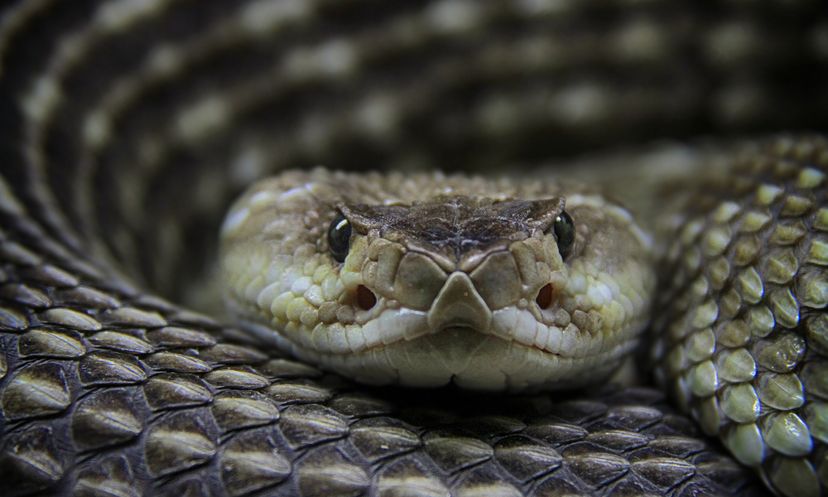
About This Quiz
Snakes can make you afraid and intrigued at the same time. Snakes have slithered over the Earth for more than 130 million years, frequently making appearances in famous narratives from the Bible to mythical stories. This unique animal can swallow animals whole and move across land without any limbs. Take this quiz and learn more about the mysterious snake.Snakes have greatly evolved since they first appeared nearly 130 million years ago.
There are close to 3,000 species of snakes. All snakes, however, share similar characteristics, including being meat-eaters and cold-blooded.
Sounds waves hit a snake's skin, which is then transferred to a snake's bone and is interpreted by the inner ear. Snakes actually don't have outer ears like humans.
Advertisement
Snakes are colorblind, but they do have light receptors to interpret different shades of light.
Boas and pythons have a special organ on top of their head that allows them to see heat sources.
Snakes smell like humans through their nostrils. A snake can also smell by gathering odor particles on its tongue.
Advertisement
Jacobson's organs are fluid sacs located on the roof of a snake's mouth. These organs are involved in the olfactory process.
Snakes don't have a diaphragm. Instead, snakes circulate air by narrowing and widening their ribcage.
Snakes have an elongated right lung, and some even have a third lung, to help with processing oxygen.
Advertisement
Two-headed snakes do exist. They are similar to conjoined twins. They rarely survive in the wild, however, because of difficulties with catching prey.
Keratin, the substance found in human fingernails, covers a snake's skin.
The new skin cells separate from the old skin, making the old skin loose. The snake then scrapes itself against a rock, and the old skin begins to peel off.
Advertisement
The skin shedding process, also known as molting, takes approximately 14 days.
The ventral scales function like tire treads. They are located on the bottom side of a snake and help a snake move along.
Most snakes move in serpentine movement, which is in an s-shaped pattern. Serpentine movement is also known as undulatory locomotion.
Advertisement
The caterpillar movement, also known as rectilinear locomotion, involves the snake making small curves up and down, rather than side to side.
Flying snakes, also known as tree-dwelling snakes, live in Sri Lanka and Southeast Asia. They swing from branch to branch, gliding in the air for long distances.
The anaconda is the heaviest species of snakes. Anacondas primarily live in water and are very similar to alligators.
Advertisement
Amazingly, snakes can eat large prey whole. Snakes can dislocate their lower jaw, due to a double jointed hinge. Moreover, unlike humans, a snake's upper jaw is fused to its skull.